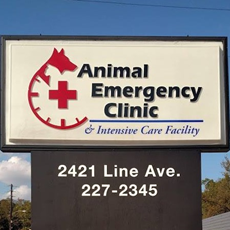Library
-
Osteoarthritis (OA) is a progressive, degenerative disease that worsens over time. This handout discusses steps you can take to help your cat deal with osteoarthritis (OA) or degenerative joint disease (DJD). In addition to medications that may be prescribed by your veterinarian, other treatment options such as weight loss, exercise, and complementary therapies such as chiropractic and physiotherapy are outlined.
-
Osteoarthritis (OA) is a progressive, degenerative disease that worsens over time. This handout discusses steps you can take to help your dog deal with osteoarthritis (OA) or degenerative joint disease (DJD). In addition to medications that may be prescribed by your veterinarian, other treatment options such as weight loss, exercise, and complementary therapies such as chiropractic and physiotherapy are outlined.
-
Care of Open Wounds in Cats
Una herida es una lesión que provoca un daño en la piel y/o en las capas más profundas. Una lesión puede ser abierta, como un corte, o cerrada como una contusión o moratón.
-
Care of Open Wounds in Dogs
Las heridas varían en función de: 1. Su causa: heridas punzantes, abrasiones, laceraciones, etc. 2. Su localización: abdomen, ojos, patas etc. 3. Su grado de contaminación: limpias (quirúrgicas), contaminadas (infectadas) etc.
-
Fight Wound Infections in Cats
Los gatos tienen un instinto muy territorial. Se pelean con otros gatos para proteger su territorio o para adquirir más territorio. Por tanto, las heridas por peleas son muy frecuentes en gatos. Se considera que el 90 % de las heridas infectadas en gatos se producen por mordeduras de otros gatos.
-
The holidays add excitement to the winter months, but we cannot forget about indoor and outdoor toxins frequently seen at this time of year. Keeping your pets healthy and safe will help keep the holidays stress free.
-
An increase in your pet's breathing rate while resting quietly or sleeping is an early clinical sign that your pet may be developing heart failure and needs to see your veterinarian. In general, all normal dogs and cats have a breathing rate of between 15-30 breaths per minute when they are resting. Resting breathing rates that are consistently greater than 30 breaths per minute are increased and considered abnormal.
-
Home renovation can be arduous for every member of the household. Awareness of possible construction site problems will help homeowners avoid pet-related issues. A little planning can make the renovation process run more smoothly everyone.
-
Taking care of a paralyzed pet comes with many challenges. This handout reviews the needs of a paralyzed pet and how an owner can help them at home.
-
Cracks may form in the horse's hoof wall, usually in a vertical direction, and either originate from the ground surface (sometimes called grass cracks) or, less commonly, from the coronary band (sometimes called sand cracks).




